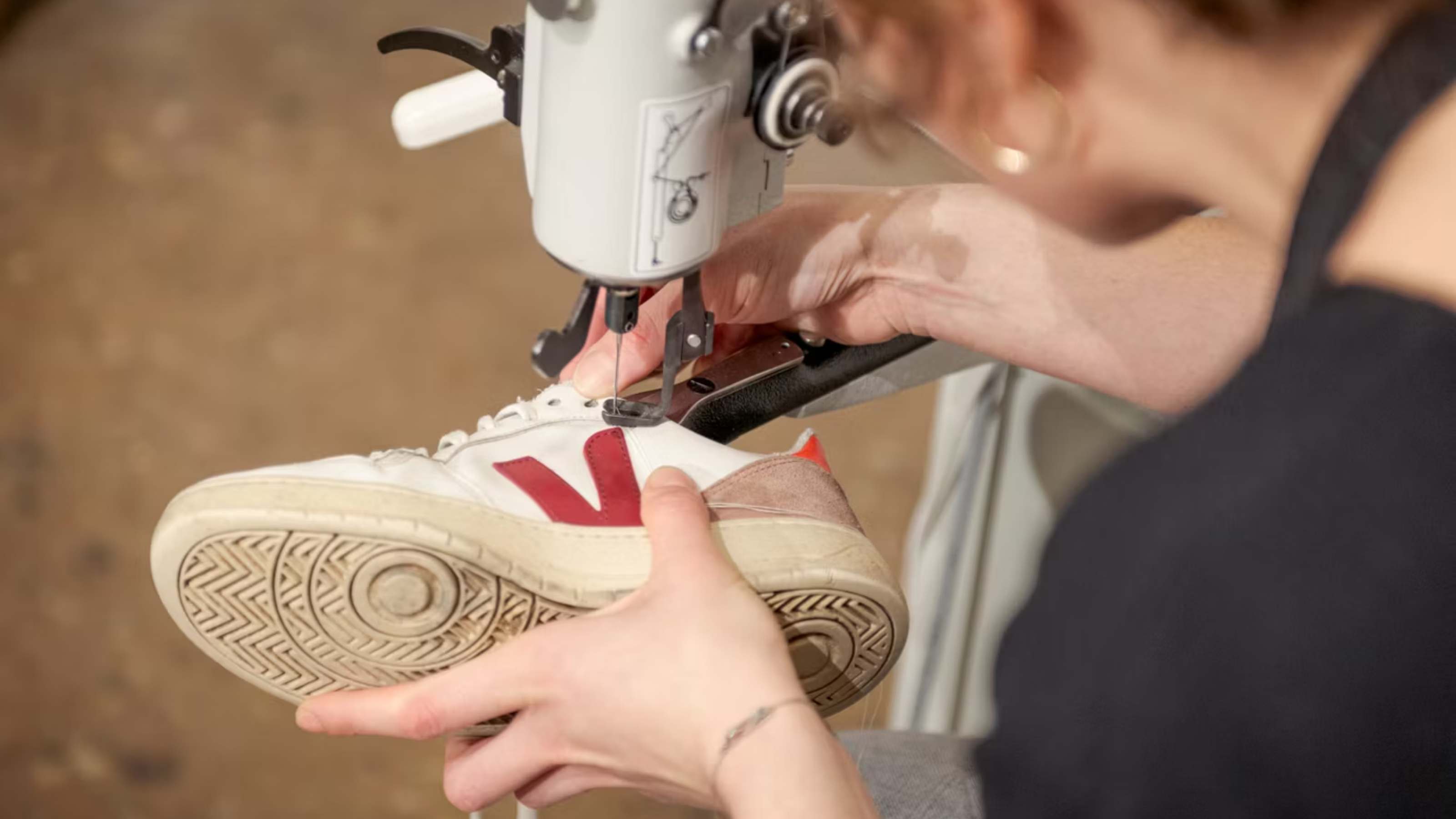But what is the real state of sustainability when it comes to sneakers? FashionUnited spoke with Saverio Lapini, co-founder and CEO of Ollum srl, a consultancy based in Arezzo, Italy, specializing in corporate sustainability and guiding companies through comprehensive strategies to reduce their environmental impact.
Saverio Lapini, Co-founder and CEO of Ollum srl, a consultancy specializing in corporate sustainability
Credits: Ollum srl
How does sneaker production fit into the sustainability landscape?
It is one of the most interesting segments because traditionally, sneakers are made using synthetic materials derived from petroleum, whether that be rubber or polyester. Today, driven by sustainability requirements, many companies are transitioning to natural materials like hemp yarn and alternatives to conventional plastics that are compostable, recyclable, and bio-based.
So, is there a shift in production methods?
Yes, although natural materials are not always suitable for these applications — sneakers need to be durable and meet certain mechanical standards. Natural materials are now used to produce bio-based rubbers, which undergo processing steps that are essentially identical to those for synthetic materials, but the base fiber is plant-based. In short, the raw material changes, but the processes to obtain rubber, even from different sources, remain the same. This allows companies to continue using their existing machinery designed for traditional production.
Is this system effective from an environmental perspective?
Yes, we can say that this method enables sneaker production with roughly one-third less environmental impact compared to conventional sneakers. However, there are two key challenges.
What are those challenges?
First, as I mentioned, these alternative materials don’t yet have the same properties and quality as traditional ones, which can result in a shorter lifespan for the product. In essence, the environmental impact per shoe decreases, but nothing is being done to extend the product’s life. This means that, ultimately, the company is not fundamentally changing the rules of the game.
What is the right approach?
Using natural materials is a positive first step, but the next critical phase is enhancing the durability of the sneakers and focusing on the after-sales experience. There are customers who would like to repair their sneakers, but brands typically do not offer such services. For example, if you get a hole near your big toe while the rest of the shoe is still intact — of course, you can’t walk around with a hole in the upper. But if there were an option to patch or reinforce the worn area, the sneakers could have a much longer lifespan.
Brands Should Also Make ‘Repaired and Worn’ Desirable
Credits: FashionUnited, image generated using Artificial Intelligence
In this context, customer desire for a refreshed look also plays a role, doesn’t it?
Let’s say that companies — especially fashion brands — have a responsibility here: they should make the ‘repaired and worn’ look desirable. The moment a fashion show features a garment with a visible patch and it becomes cool, that’s another step forward.
Let’s talk about pricing — sustainable accessories are often more expensive, which influences consumer purchasing decisions.
The natural materials used to produce sustainable sneakers are generally more expensive. This is because there are no economies of scale yet, and producers — mainly located in Italy’s Marche region or in Southeast Asia — are still niche players and not affected by the “price wars” that apply to other suppliers. I would also add that material costs account for roughly 20% of the final retail price of sneakers.
Would it be possible to benefit from economies of scale by producing only sustainable sneakers in larger volumes?
Exactly. The reality is that many companies only offer one sustainable model or one sustainable product line.
Why do you think that is?
Often, companies lack a clear sustainability vision, as well as the necessary culture and expertise. Many well-educated young professionals join these brands with high expectations, but when they realize there is no long-term sustainability strategy, they often decide to pursue opportunities elsewhere.
Source: FashionUnited
Sneakers and sustainability: brands must make repaired items desirable
The topic of sustainability in fashion has also made waves in the footwear industry — particularly in sneakers. Sneakers have become widely accepted for nearly every occasion and are a staple in brand collections across all price ranges and target audiences. (Partially) sustainable or recyclable sneakers have taken center stage in experimental projects and materials research led by industry pioneers.




